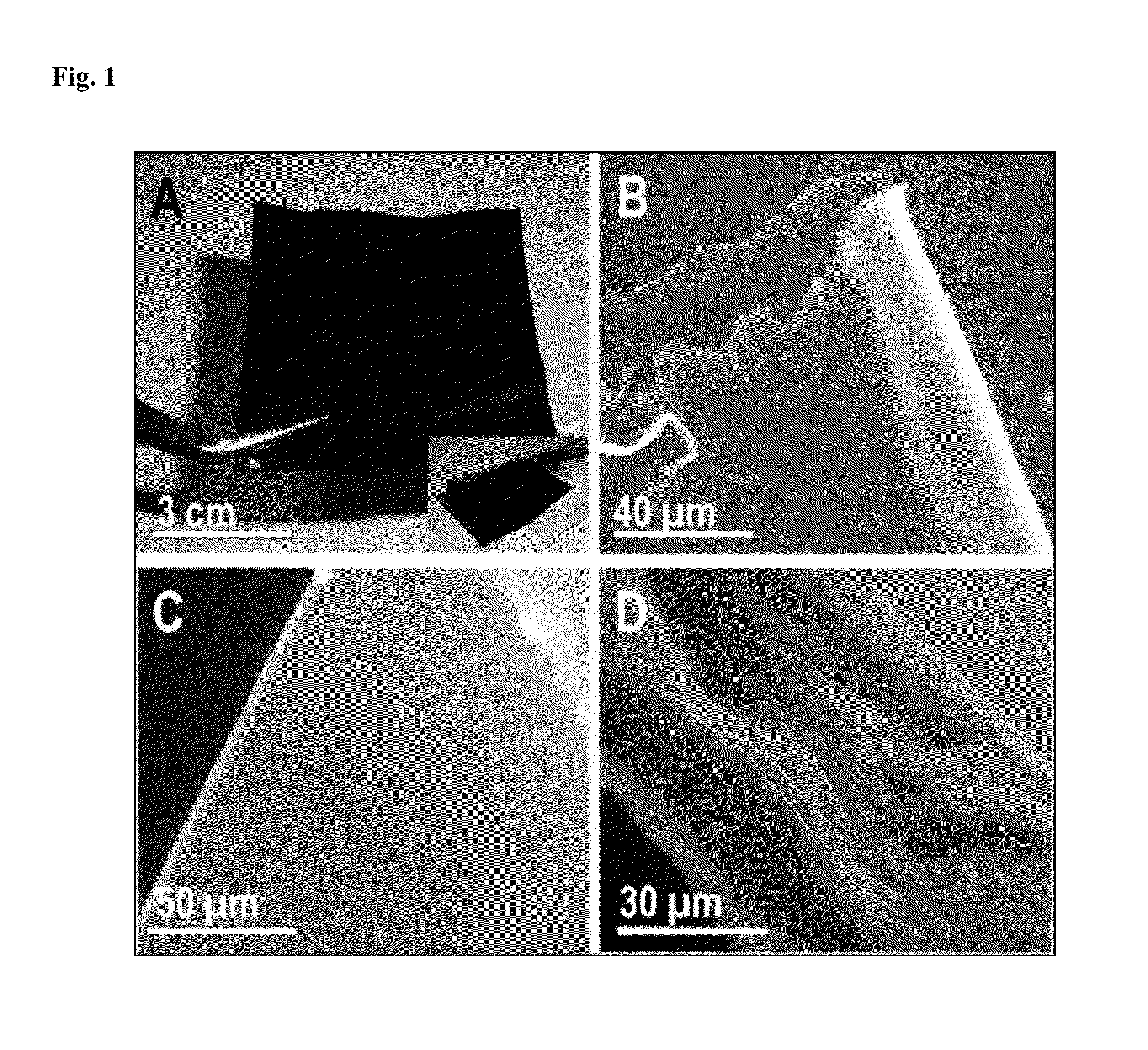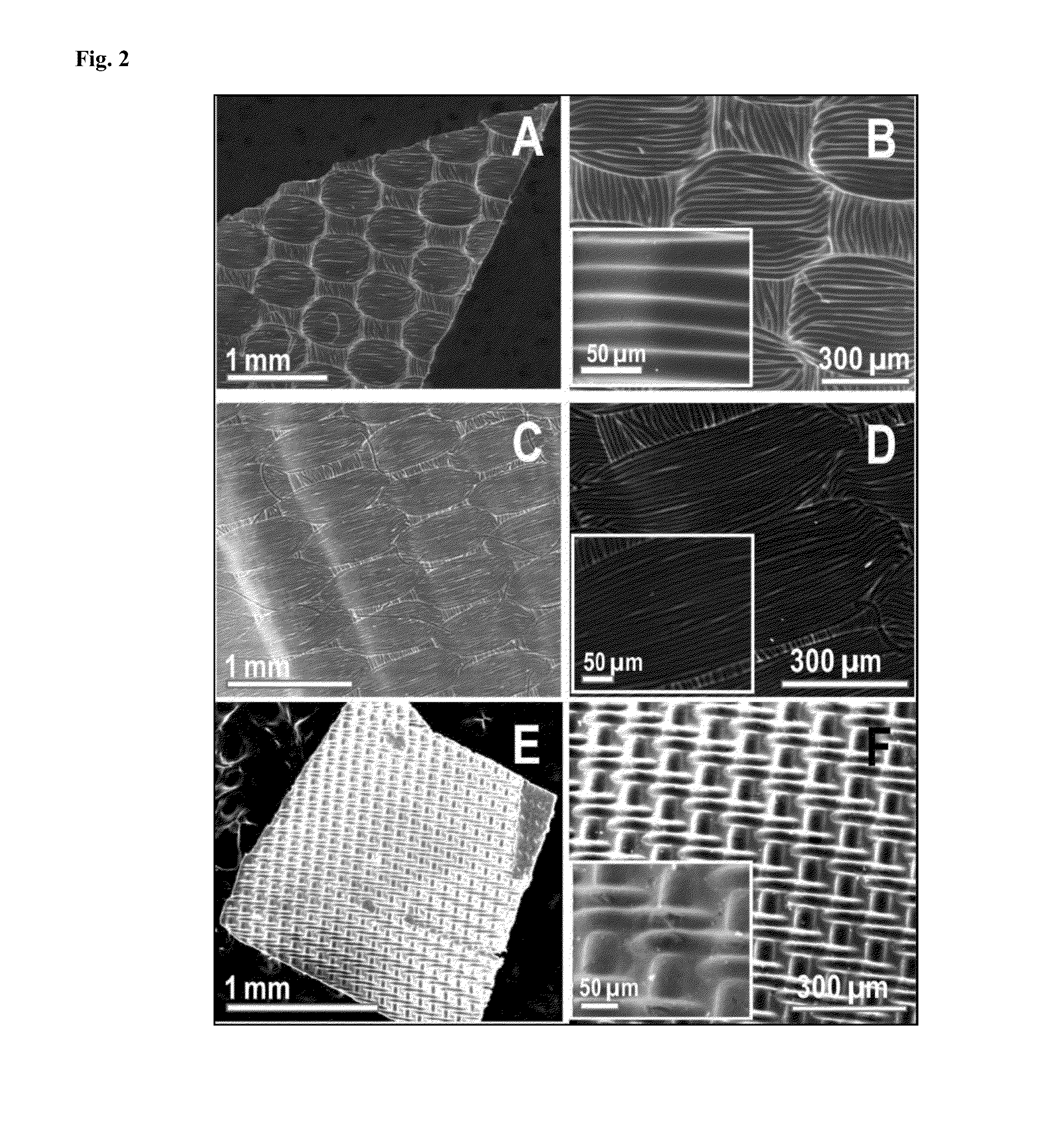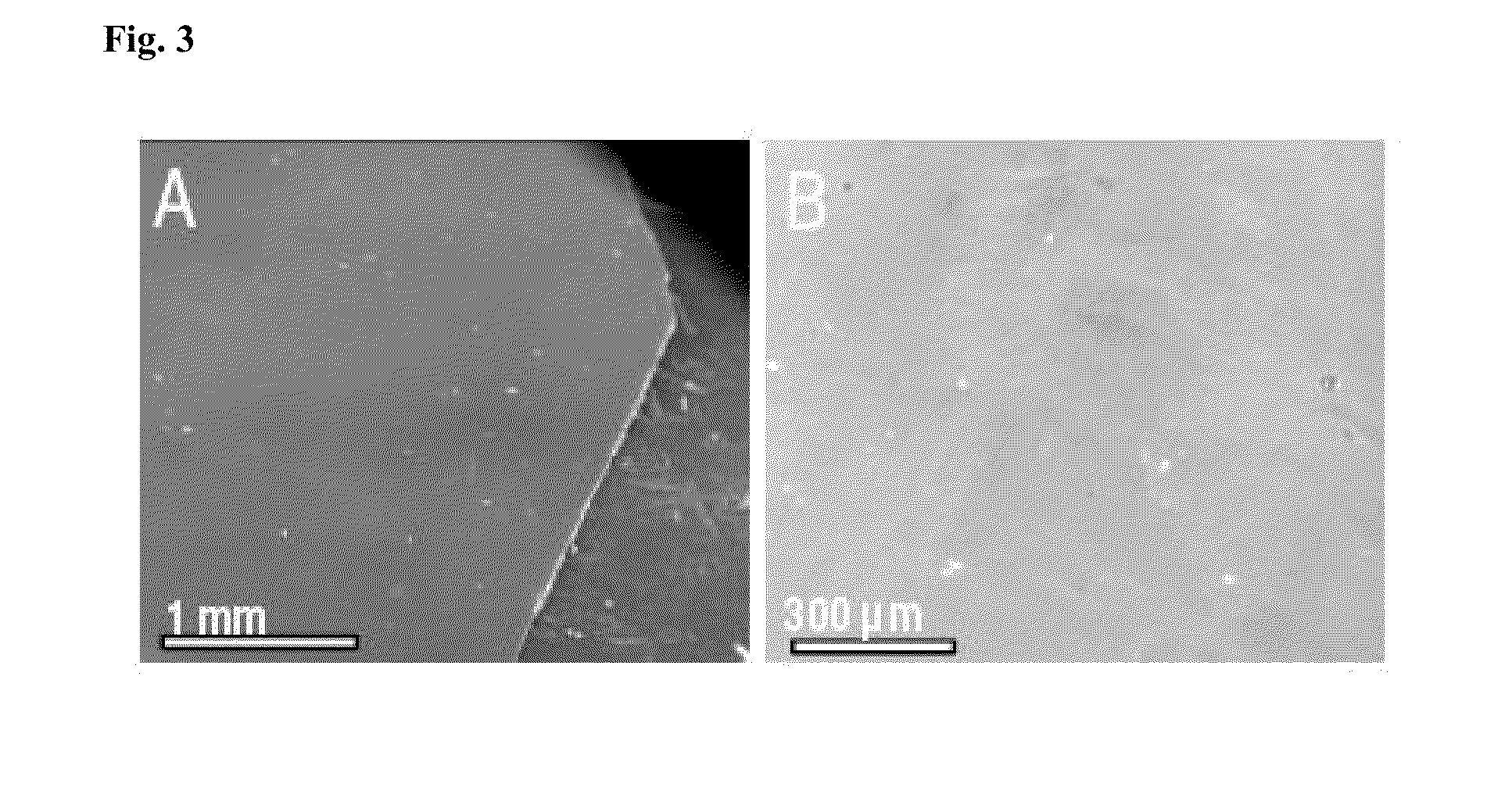Luminescent graphene patterns
a graphene pattern and light-emitting technology, applied in the direction of electrostatic spraying apparatus, ion implantation coating, coating, etc., can solve the problems of poor yield of methods, serious limitation of the use of barcodes, and limited information conveyed by barcodes
- Summary
- Abstract
- Description
- Claims
- Application Information
AI Technical Summary
Problems solved by technology
Method used
Image
Examples
example 1
Pre-Oxidation of Graphite
[0029]In a 250 mL beaker, concentrated H2SO4 (25 mL), 5 g of K2S2O8 and 5 g of P2O5 were taken and heated to 90° C. with constant stirring. After all the reactants were completely dissolved, the reaction temperature was decreased to 80° C. To this reaction mixture, 6 g of graphite powder was added slowly. Bubbling was observed initially and subsided subsequently, over a period of 30 minutes. Temperature of the reaction mixture was maintained at 80° C. for 5 hours. Heating was stopped and the mixture was diluted with 1 L of distilled water and left undisturbed overnight. The resultant solution was then filtered and washed to remove excess acid. The solid product was dried in air overnight to yield pre-oxidized graphite.
example 2
Oxidation to Graphite Oxide (GO)
[0030]230 mL of concentrated H2SO4 was maintained at 0° C. using an ice bath. Pre-oxidized graphite was then added to this and stirred. 15 g of KMnO4 was added slowly making sure that the temperature never went beyond 10° C. Then, the temperature was raised to 35° C. and allowed to react for 2 hours. Subsequently, 1 L of distilled water was added carefully keeping the temperature below 50° C. The reaction mixture was stirred for 2 hours and then 1.5 L of distilled water and 25 mL of 30% H2O2 were added. The mixture was kept at room temperature for a day and the supernatant was decanted. The remaining solution was centrifuged and washed with 10% HCl followed by distilled water. This was repeated several times. The resultant solid was dried and 2% (w / w) dispersion was prepared in distilled water. This dispersion was dialyzed for 3 weeks to remove all unwanted contaminants like salts and acid. Then the dispersion was diluted to 0.1% (w / w).
example 3
Hydrothermal Deoxygenation of Graphene Oxide (GO) to Reduced Graphene Oxide Nanosheets
[0031]Reduction of GO was performed by the hydrothermal method. In a typical synthesis procedure, GO was sonicated for 45 minutes. (CREST TRU-SWEEP 27D, 50 Hz) to exfoliate the suspension completely and centrifuged at 5000 rpm to remove the unexfoliated GO. About 50 mL of the purified exfoliated GO solution (0.05 wt %) was transferred to a Teflon-lined hydrothermal reaction vessel and heated at 180° C. for 6 hours. After 6 hours, the vessel was cooled to room temperature. A black precipitate of RGO settles at the bottom. This was redispersed in distilled water by mild sonication.
PUM
| Property | Measurement | Unit |
|---|---|---|
| Temperature | aaaaa | aaaaa |
| Temperature | aaaaa | aaaaa |
| Dimensionless property | aaaaa | aaaaa |
Abstract
Description
Claims
Application Information
 Login to view more
Login to view more - R&D Engineer
- R&D Manager
- IP Professional
- Industry Leading Data Capabilities
- Powerful AI technology
- Patent DNA Extraction
Browse by: Latest US Patents, China's latest patents, Technical Efficacy Thesaurus, Application Domain, Technology Topic.
© 2024 PatSnap. All rights reserved.Legal|Privacy policy|Modern Slavery Act Transparency Statement|Sitemap



